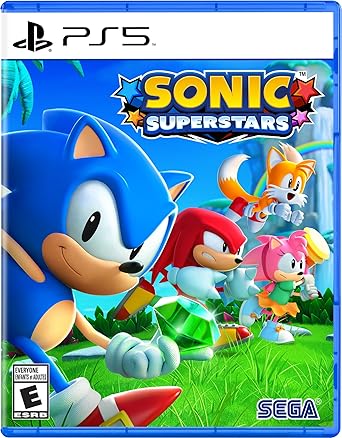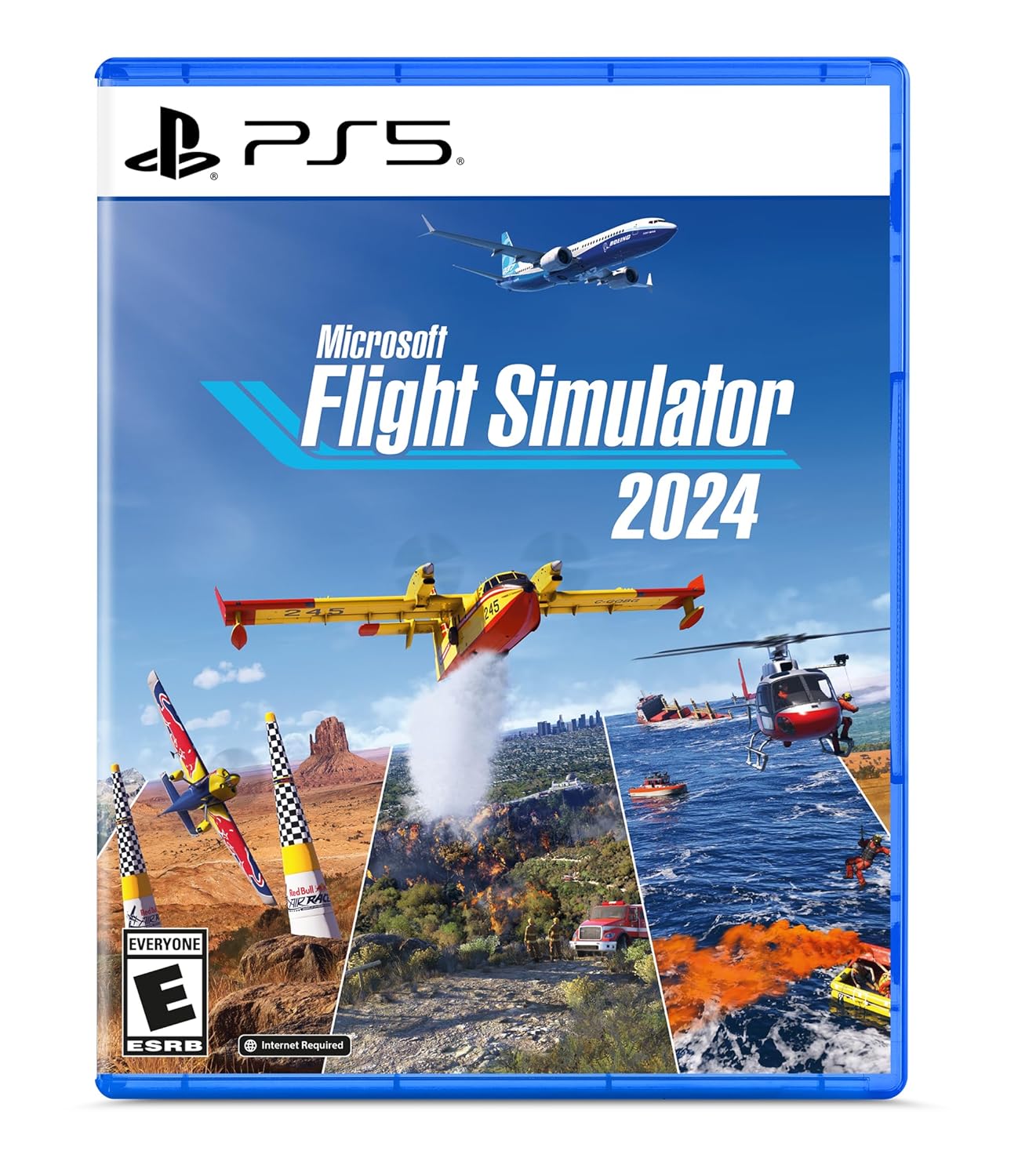
Introduction & Expectations
Sonic Superstars is Sega’s attempt to recapture the energy and appeal of the classic 2D Sonic games while bringing in new ideas — multiplayer, Emerald-powered abilities, branching level design, and modern visuals. On PlayStation 5, many of the promises are delivered well, though not without friction. As a longtime Sonic fan, I entered this with cautious optimism: could this be a “next generation” side-scroll Sonic worth playing on a modern console?
In short: it’s a mostly fun ride with occasional frustrations. Below, I break down the experience across design, gameplay, presentation, and lasting value.
Gameplay & Mechanics
Core Movement, Physics & Level Flow
At its heart, Sonic Superstars leans heavily into the laws of classic Sonic — momentum, loops, slopes, springs, and speed. On PS5, the character movement feels responsive and dynamic. You sense inertia, gravity, and the smoothness of transitions between high-speed runs and tighter platforming segments. This continuity is one of the strongest aspects of the game: it feels “Sonic” in motion.
Levels are designed with branching paths, hidden routes, vertical sections, and alternative routes. As a result, exploration is rewarded. You’re not always forced to go fast in a straight line; sometimes detours or alternate paths lead to powerups or secrets. This shift toward exploration is a double-edged sword: it adds depth, but occasionally slows the pace compared to classic “go fast” expectations.
That said, some stages push the balance too far: too many obstacles or traps that force precise reactions, which can feel punishing if you expect a more forgiving run.
Emerald Powers
One of the marquee new features are the Emerald Powers — special abilities tied to collecting Chaos Emeralds. Powers like fireballs, shields, temporary invulnerability, or rings-attract abilities can change how you approach a section or boss. These do add a fresh layer, but in practice their utility is hit-or-miss. Some powers feel integral and fun; others are situational and rarely used. The game doesn’t always encourage or necessitate their use, which undercuts their potential.
Boss Battles & Difficulty Spikes
Where the game often stumbles is in its frequent and extended boss encounters. Almost every “act” ends with a boss, and many of them drag on. Some bosses have phases where the target is untargetable, or require memorization or perfect timing, which interrupts pacing. There’s little room for error in later fights, and checkpoints within those boss battles are sparse.
As you progress, the difficulty curve steepens sharply. Earlier zones feel manageable, even forgiving in design. But in the later zones, bosses, hazards, and level layouts push toward harder-mode territory. For some players, this is an exciting challenge; for others, it might feel unfair.
Multiplayer & Co-op
Sonic Superstars supports up to four players — either local split-screen or online. The idea is appealing — bring friends into the fun. However, the nature of fast-paced side-scrolling design doesn’t always translate well to cooperative play. When multiple players move at different speeds or take different paths, collisions, screen management, and camera constraints lead to compromises in level design and gameplay.
In practice, co-op works — but it’s not always smooth or optimal. Sometimes one player ends up dragging or waiting; sometimes screen constraints force the slower pacing or restrict freedom to explore fully. It’s a nice addition, but not one that outshines solo play.
Presentation & Technical Performance
Graphics & Visual Style
On PS5, Sonic Superstars is visually striking. The game uses a blend of 2D and 3D elements — sometimes called 2.5D — where backgrounds, foregrounds, and environmental assets pop with depth and polish. The art style is modern but nostalgic, with vibrant color palettes, fluid animations, and visual details that bring the zones to life. Even when there’s a lot happening onscreen (multiple players, effects, hazards) the camera generally does a competent job of keeping things legible.
Textures, lighting, and effects (like particle effects, blur, glow) feel modern without going overboard. The clarity and smoothness in motion are where the PS5 version shines compared to lesser hardware.
Performance & Frame Rate
The PS5 runs Sonic Superstars at a smooth frame rate. I encountered no noticeable frame drops or stutters in standard action. Loading times between zones and levels are quick, which helps maintain flow. The consistency in performance contributes to enjoyment — nothing drags you out of the moment.
There were occasional minor graphical glitches or collision oddities in rare spots, but nothing game-breaking in my playthrough. The more serious bugs tend to appear in boss fights or edge cases under stress, but they’re not pervasive.
Audio, Music & Sound Effects
The soundtrack is ambitious. Sega assembled a mix of internal and external composers to deliver tracks that nod to classic Sonic while exploring new territory. Some tracks are standout— dynamic, energizing, and memorable. Others are more forgettable or feel slightly uneven in tone. Still, overall the music often elevates a level’s mood.
Sound effects, voice lines, and ambient audio are solid. Rings, jumps, boosts, enemy hits, and transitions all feel good. Audio mixing is good — music rarely drowns out essential cues or sound effects.
Content, Structure & Replay Value
Story & Characters
Sonic Superstars features several playable characters: Sonic, Tails, Knuckles, Amy, and a new character, Trip. The narrative is serviceable — simple in structure, fitting for the genre, but not especially deep. Trip’s inclusion and the return of Fang (from earlier franchise lore) are interesting touches, though their presence sometimes feels more decorative than organically integrated.
The story mostly gives context and motivation for your runs across the “Islands of the North Star” and the Chaos Emerald quest. It’s not the strongest draw, but it suffices to make progression make sense.
Zones, Acts & Variety
There are multiple zones (worlds), each subdivided into acts, with various themes, gimmicks, and environmental mechanics — vines, moving platforms, digital/voxel transformation zones, sloped terrain, tunnels, switches, and more. Many zones introduce new mechanics gradually so the game remains fresh. Some zones are stronger than others — a few feel more inspired, others less memorable.
Because not every act is identical in structure and because of branching paths, it encourages revisiting for alternate routes or to find all Emeralds. That said, some players may find certain zones or acts underutilized or less interesting.
Challenges, Extras & Unlockables
Beyond the main story, there are bonus stages, time trials, hidden collectibles, and the multiplayer / battle modes. The multiplayer “Battle Mode” offers competitive match types (collecting stars, races, survival) and unlockables tied to medals earned in the main game.
However, many players and critics note that the incentive to deeply engage with the battle mode is limited: rewards often tie back into cosmetic or supplemental unlocks rather than core upgrades. If multiplayer isn’t your primary interest, some optional content may feel thin.
Strengths & Weaknesses
Strengths:
-
Classic Sonic movement and momentum feel are very well implemented.
-
Level design generally balances speed and exploration, with branching paths and clever layout.
-
Visuals on PS5 are polished, vibrant, and modern while retaining a nostalgic touch.
-
Soundtrack offers a strong mix of energetic tracks, occasionally memorable themes.
-
Performance is stable and smooth, with fast loading and minimal technical issues during standard play.
Weaknesses:
-
Boss battles are often too long, sometimes frustrating, and disrupt pacing.
-
Difficulty spikes and harsher segments appear late in the game, which may alienate more casual players.
-
Emerald Powers, while a bold idea, sometimes feel underutilized or inconsistent in impact.
-
Multiplayer/co-op is a good inclusion but doesn’t always mesh gracefully with Sonic’s speed-oriented design.
-
Some zones are less inspired; optional modes and extras feel lightweight in comparison.
Final Verdict & Recommendation
Sonic Superstars on PS5 is a commendable, mostly successful attempt to reinvigorate 2D Sonic for modern consoles. It captures much of what makes classic Sonic fun: speed, momentum, exploration, and satisfying movement. On the technical side, it performs smoothly, looks sharp, and delivers a cohesive aesthetic and audio experience.
However, it is not without flaws. The boss design, late-game difficulty, and somewhat inconsistent new mechanics prevent it from being a perfect modern classic. Multiplayer is fun, but not the game’s strongest pillar. For many players, the solo experience will remain the core draw.

